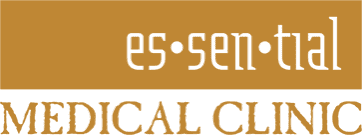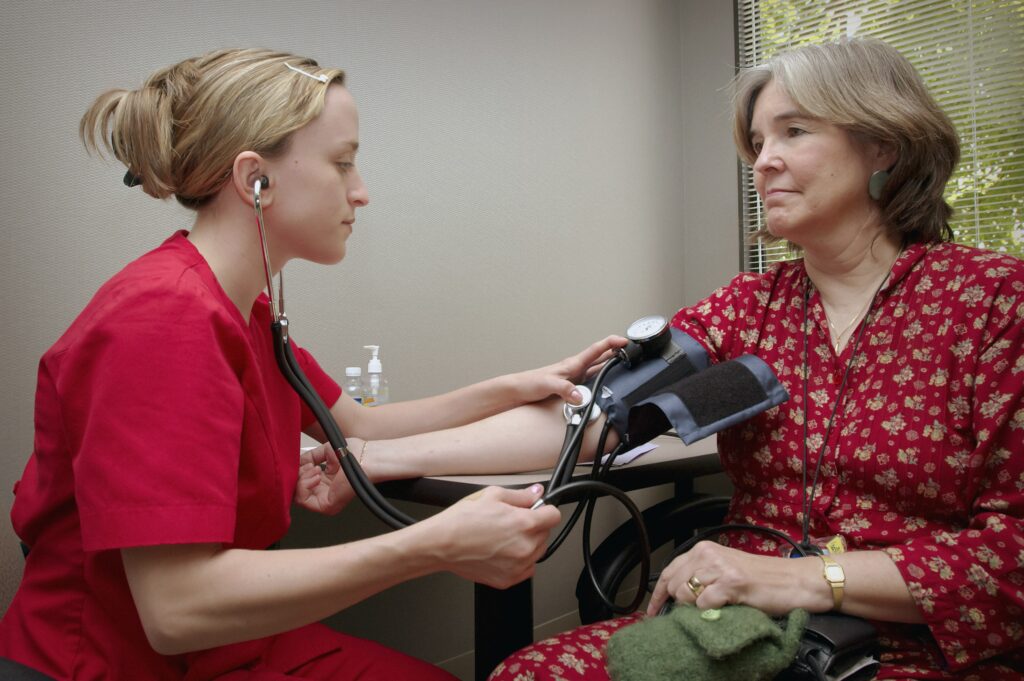There is no quick and safe way to lower blood pressure outside of a medical setting. However, there are lifestyle changes that can lower blood pressure over time: exercise, diet, and stress-reducing practices.
This is merely for informational purposes. This article does not provide a diagnosis or an endorsement of any treatment. Try to seek medical advice for any kind of health.
In order for medical personnel to safely lower your blood pressure, call the emergency room if you experience these symptoms:
- Blood pressure reading greater than 180/120
- severe headache
- Chest pain
- feeling short of breath
- Nausea
- Loss of balance
You may want to find ways to lower your blood pressure if you have a very high reading. However, it is impossible to lower blood pressure outside of a health care setting reliably, safely, and quickly.
The good news is that there is a solution. Blood pressure can be lowered safely over a period of days or weeks. Learn about high blood pressure and how to manage it safely.
Factors that contribute to high blood pressure

You may have experienced a brief rise in blood pressure, during exercise or after drinking coffee. The condition of hypertension occurs when your blood pressure remains high regardless of the circumstances.
Causes of hypertension include:
- Being genetically predisposed
- Consuming too much salt in the diet
- Being overweight or obese
- drinking excessive amounts of alcohol
- Have obstructive sleep apnea
- Insufficient physical activity (sedentary lifestyle)
- Taking certain medications: decongestants (pseudoephedrine), ADHD medications (amphetamine salts), nonsteroidal anti-inflammatory drugs (NSAIDs), or steroids (prednisone)
What is considered high blood pressure?
Blood pressure readings are calculated using the systolic and diastolic readings (top and bottom numbers). Normal blood pressure (less than 120/80) is defined by the American Heart Association (AHA). High blood pressure has levels above 130/80.
Is high blood pressure a risk factor?
If you are susceptible to developing hypertension (high blood pressure) you can suffer from heart problems, strokes and kidney problems. Genetic or lifestyle factors may contribute to the severity of the risk. Make sure you know the details of your health so you can take steps to prevent future health problems.
Is it safe to quickly lower blood pressure?

It’s not a good idea to try to lower your blood pressure quickly. The most appropriate thing is always to maintain a standard level in blood pressure. It is dangerous to lower it drastically.
Blood from the heart and blood vessels carry oxygen and nutrients to the kidneys, lungs, and brain. If blood pressure drops sharply, these organs may not get the continuous flow of blood and oxygen they need.
This can eventually lead to a stroke, permanent brain damage, and damage to organs and tissues. In this situation, patients should lower blood pressure fairly slowly and allow continuous monitoring in a clinical setting.
Naturally lower your blood pressure over time
We know that there is no foolproof, safe and fast way to lower blood pressure. However, there are natural ways to do this over time:
- Do exercise every day. Lowering blood pressure with exercise is safe and effective. You can improve your heart health by being physically active for at least 30 minutes every day.
- Reduce your sodium (salt) intake. The American Heart Association recommends keeping your sodium intake below 1,500 mg per day. The DASH diet, for example, is a low-sodium eating plan.
- Do not drink more than 1 or 2 alcoholic drinks a day. You can also gain weight if you drink alcohol, which can increase your blood pressure.
- Prioritize stress reduction. You may experience temporary high blood pressure when you are stressed. You can get high blood pressure if you are stressed all the time. Do something relaxing every day to relieve stress. Take a warm bath, walk outside, and listen to relaxing music to lower your stress levels.
How to lower your blood pressure when it’s dangerously high?
The so-called “silent killer”, i.e. high blood pressure, usually does not have many symptoms. By the time you have symptoms, it’s already worrying: headache, chest pain, shortness of breath, nausea, and loss of balance.
If your systolic blood pressure (top number) or diastolic blood pressure (bottom number) is higher than 180 or 120, you may be experiencing a “hypertensive crisis.”
Don’t try to lower your blood pressure on your own in this scenario. If you experience a hypertensive crisis, you should seek medical and professional attention immediately.
When going to the hospital for high blood pressure, schedule an appointment with your trusted doctor within a week. Their recommendations can help control your blood pressure at home.
What to do when your blood pressure rises just before visiting a doctor?

This is known as “white coat syndrome.” Your blood pressure ranges from normal to high at home but is significantly higher in medical settings, such as hospitals or doctors’ offices. These places can lead to anxiety or nervousness.
This syndrome affects approximately 15% of patients with high blood pressure in the doctor’s office.
Try to relax as much as possible before having your blood pressure measured. You can reduce the chances of white coat syndrome falsely raising your blood pressure. Try the following:
- Arrive at your appointment with enough time. So you will not be stressed while driving, parking and finding the office. If you need help staying calm, bring a friend with you.
- Before you go to your appointment, fill out the paperwork ahead of time.
- When you’re already in the waiting room, meditate quietly or listen to music with headphones.
- Take a deep breath before the measurement. Make sure you put both feet on the ground.
- Ask your doctor if you can buy a blood pressure monitor at the pharmacy. This way you can control your blood pressure during the course of a normal day. A more accurate reading will help your doctor determine if the stress of being in a health care setting is contributing to high blood pressure.
10 Methods to Gradually Lower Your Blood Pressure
1. Achieve a healthier weight

For every ten kilos lost your systolic blood pressure (the first number in your blood pressure results) will drop between five and twenty points. Weight loss of as little as 10 pounds can help lower blood pressure in overweight people.
The goal is to reduce your body mass index (BMI) from 18.5 to 24.9.
Weight loss will help with sleep apnea, the condition where breathing stops intermittently while you sleep and causes your heart to beat irregularly.
Lose weight slowly with a combination of healthy eating and exercise. Your blood pressure will drop on its own if you keep track of your weight. Regularly check your blood pressure at home and gradually follow your goals.
2. Eat a healthy diet

There is a diet plan called DASH (Dietary Approaches to Stop Hypertension) that is considered by many to be the most effective way to control and lower blood pressure. Follow this program and watch your systolic blood pressure drop 8 to 14 points.
Your basic principles are to avoid or limit:
- Foods high in saturated fat and total fat
- Processed foods
- Sweet food
- Salt
- excess carbohydrates
- Caffeine
- Alcohol (two drinks or less per day for men and no more than one drink for women)
In addition to that, your diet should include:
- Antioxidants found in fruits and vegetables, particularly berries.
- whole grains
- Nuts without salt, rich in proteins
- Green leafy vegetables and beans, rich in potassium and magnesium.
- Low-sugar, calcium-rich yogurts
3. Exercise regularly

The soul mate of a healthy diet is exercise. If you exercise and eat a healthy diet, you are more likely to lose weight. The official recommendation is to exercise for at least 30 minutes most days of the week. This can lower your blood pressure by four to nine points. Remember, exercise is more than just a workout at the gym. You can do housework or gardening. Walking, dancing, jogging, biking, and swimming are all good aerobic activities that get your heart rate up.
4. Limit your sodium intake

The American Heart Association recommends people with high blood pressure keep their sodium intake below 1,500 milligrams a day. Check the nutritional information on food labels. Slowly reducing your intake reduces your chances of noticing a difference.
Prepare your own food if you want to reduce consumption. Meals away from home and packaged foods account for 75% of sodium intake. Instead of salt, use more spices.
It’s important to eat foods rich in potassium (such as bananas, raisins, tuna, and milk) to help flush sodium out of your system. They can be lowered from two to eight points with a little effort.
There are several ways to minimize sneaky salt while adding healthy flavor:
- Read the labels. Look for salt, sodium, sea salt, and kosher salt.
- Rinse salty canned foods like tuna or beans before eating.
- When cooking, swap sodium and salt for herbs and spices.
- Side dishes with a lot of salt are usually instant or flavored. Instead of savory side dishes, make rice, pasta, or cereal. At the time of serving, you can add seasonings or very little salt.
- Look for “low sodium” on food labels.
5. Relax and reduce stress

Stress reduction helps maintain normal blood pressure. Doing exercises like yoga and tai chi, meditating, or listening to relaxing music are all good ways to reduce stress. Playing music has been shown to provide benefits similar to physical activity.
Sitting in the sun releases endorphins and lowers blood pressure.
Make sure you have a support network. Family and friends can brighten your mood. You can deal with stress in many ways:
- Determine what is important to you and don’t put too much pressure on yourself.
- Control what you can.
- Find ways to relieve your stress. If you need to find a solution, you may benefit from brainstorming with a co-worker or family member.
- If you are aware that someone or something is causing you stress, you should avoid it as much as possible.
- Take a break to do something you enjoy during the day. Consider going for a walk or finding a quiet place to meditate.
- You can improve your mood and your environment if you express your gratitude.
6. Reduce your alcohol consumption

If you limit yourself to one alcoholic drink a day (for women) or two alcoholic drinks (for men), you can lower your systolic blood pressure by 2 to 4 points. The standard amount of a drink is 12 ounces of beer, 5 ounces of wine, or 1.5 ounces of 80-proof liquor.
7. Quit smoking

Quitting smoking is probably the best thing for your heart, it’s good for your overall well-being. Smoking not only harms you over time, but also increases your blood pressure. See your doctor for help and strategies to kick that addiction.
8. Prescription drugs

Some people can control their blood pressure with lifestyle changes alone. However, other people also need medicine. Be sure to follow your doctor’s instructions exactly. When you medicate you should not reduce doses or skip days. You can use daily pill boxes or electronic reminders to help you remember your doses.
9. Supplements and vitamins

Some vitamins and minerals help lower blood pressure, according to research. You should consult your doctor before taking any vitamin. Tell them everything you take.
Vitamin C protects the lining of blood vessels with antioxidants. Fruits and vegetables like broccoli, kale, tomatoes, and sweet red peppers are also rich in vitamin C, as is orange juice and kiwi juice.
An adult needs 400 mg of vitamin C per day.
You get rid of sodium through urine by consuming potassium. Women should aim for 2,600 mg daily, while men should take 3,400 mg. It is an essential nutrient found in fruits and vegetables such as bananas, prunes, potatoes, tomatoes, and artichokes.
The vitamin D in this food contributes to the production of the enzyme renin. Vitamin D can be found in fatty fish, such as salmon and mackerel, and in milk. Sunlight and supplements can also provide vitamin D.
10. Take care of your sleep

Sleep also lowers your blood pressure, as well as your heartbeat and breathing rate. Your blood pressure will stay high if you don’t get enough sleep. Stress hormones can also be affected by lack of sleep, which can play a role as well.
It’s best to stick to a regular schedule, exercise early in the day, and avoid eating or drinking too close to bedtime.
In summary
High blood pressure cannot be lowered safely and effectively at home. To lower your blood pressure, you need to make small changes over several days or weeks. This way your body can adapt to changes calmly. When your blood pressure is dangerously high you need to go to the hospital.
Any time you lower your blood pressure at home, be sure to keep your doctor in the loop. Talk to your health care provider about how you can improve your diet and gradually increase your physical activity. Recommendations in these areas may differ from person to person. It is vital that you discuss your plans to lower your blood pressure with your doctor, confirm that they are safe and suitable for you.
Remember that this article is merely informative. Here it is not possible to provide a diagnosis or an endorsement of any treatment. Always seek good medical advice.
Keep reading other articles that benefit health with us:


